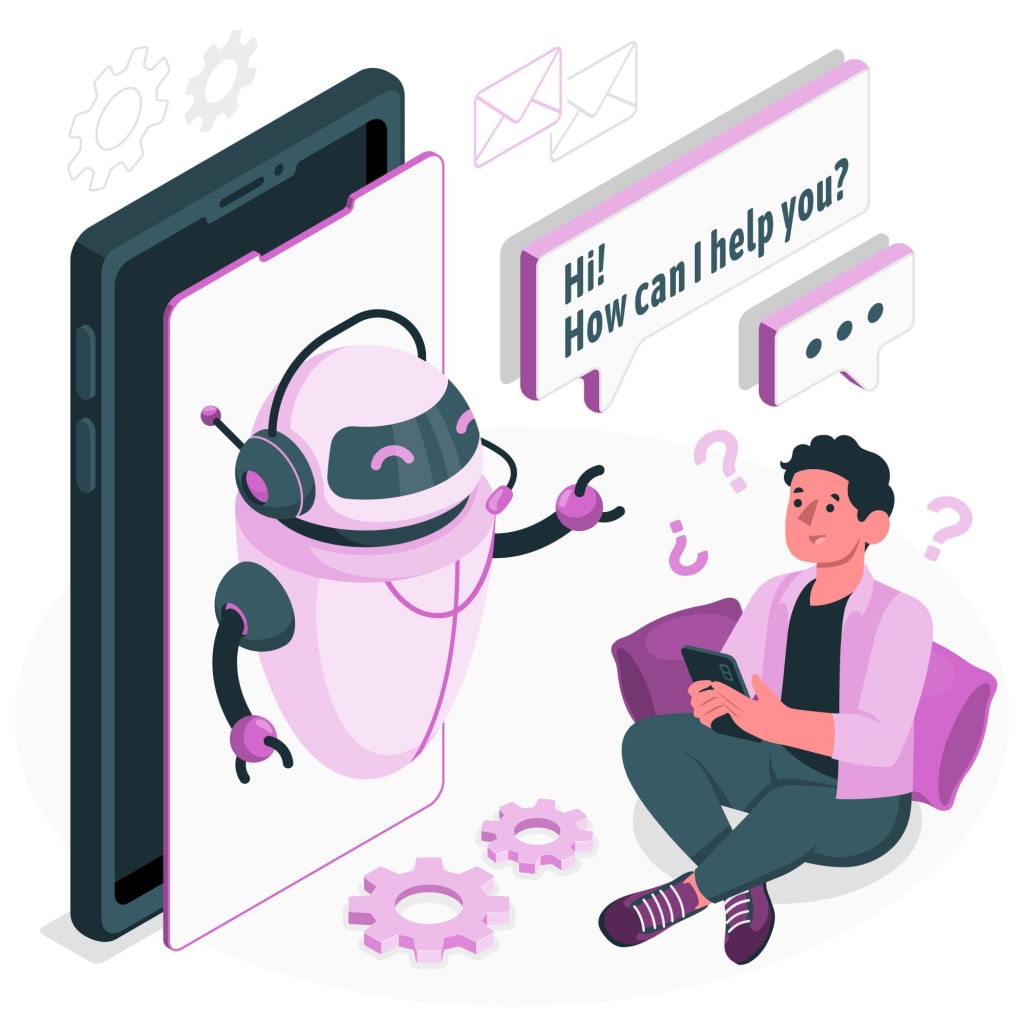How to Make Your Chatbot Interactions Compelling with Data Visualization
Understand How to Make Chatbot

Table of Contents
1. Introduction: The Role of Data Visualization in Chatbot UX
2. The Role of Data Visualization in Chatbot UX
3. Choosing the right visualization techniques for Chatbot Interactions
4. Embed Viz into Conversational Flows
5. Design Visually Aesthetic and Intuitive Chatbot Interfaces
6. Using Data Visualization to Build Better Chatbot Functionalities
7. Measurement of Data Visualization impact on Chatbot Engagement and Satisfaction
8. The Data Science Course and Placement in Developing Data Visualization Skills for Chatbots
9. Ethical Considerations in Implementing Data Visualization at Chatbots
10. Integrating Data Visualization as a Part of Omnichannel Chatbot Strategies
11. Real-World Case Studies: Data Visualization Implemented Successfully at Chatbots
12. Conclusion: Embracing the Data-Driven Future of Conversational Experiences
Introduction: The Power of Data Visualization in Chatbot Interactions
In this rapidly changing space, conversational AI and chatbots provide the lifeline for smooth, personalized, and engaging interactions with customers. With AI agents having a growing potential, the need for data visualization brings in the big picture, the use of effective techniques. Integrating attractive and intuitive data visualization in chatbot conversations can increase users' stickiness, information retention, and, as a result, drive more meaningful and productive conversations.
Data visualization is positioned as a bridge between data interactions at the chatbot end and the human end-user. When information is experienced by the chatbot in the form of visual inputs rather than complex data processing, it can represent information convincingly through insights, decisions, and actions to empower the user to perform and act rationally.
The Role of Data Visualization in Effective Chatbot UX
Chatbot data visualization, therefore, is much more important because of great User Experience (UX) principles. Factors such as user preferences, device constraints, and conversational context should be taken into account in making a visualization appealing, with or without purpose.
Sometimes, while making the UX design for chatbots, it is a part of the data science course curriculum with placements, which readies students for developing the user-centered conversational interfaces that elicit interactions that are engaging, informative, and actionable. These principles allow for the creation of chatbots that can appropriately weather data in a seamless conversational context.
Picking the Right Techniques in Data Visualization for Interaction with a Chatbot
Some of the key challenges include determining and selecting the appropriate techniques of data visualization in line with the context and needs of the user— from simple bar charts and line graphs to more sophisticated visualizations like tree maps, scatterplots, and heatmaps—the choice of visualization is determined by kind of data being presented, the kind of insights being put across, and the kind of familiarity the user has with the subject matter.
These aspects of the chatbot interaction can be enhanced by experimenting with all the available data visualization techniques introduced in a Data Science course and Placement program. Students go through the experiences of what to use when and what to avoid in specific situations or contexts. The success rates or preferences of specific populations in the case of each data visualization type are thus familiarized. They master those techniques because they will enable an aspiring data scientist to build chatbots that make appropriate and impactful visualizations for their users.
To maximize the potential of data visualizations in chatbots, such visual elements must seamlessly fit into the overall conversational flow. This will involve careful consideration of when, where, and in respect to what context visualizations are placed, to let them optimally contribute toward users' experiences.
This is so crucial since pretty much all those facts are taken care of in all the Data Science Course and Placement programs by integrating different strategies and best practices for data visualization where chatbot interactions are concerned. The skills and knowledge provided to the student will be putting together conversational flows with the right balance of textual, visual, and interactive components. Mastery of such techniques will empower aspiring data scientists to create chatbots that can offer a more engaging, informative, and effective conversational experience.
Designing Visually Appealing and Intuitive Chatbot Interfaces
In addition to content and information placement, data visualization, and proper visual design, a chatbot interface must incorporate the principles of visual hierarchy, color theory, and use of typography in order to lead to a visually intuitive, user-friendly, and aesthetically attractive experience.
Many of the Data Science Course and Placement programs in this area delve into the nuances of visual design for chatbots, arming learners with the skills and information required to develop interfaces that are engaging, and easily navigable, ensuring they are visually appealing and accessible on devices of any class, in terms of size.
Learners can use data visualization in chatbot-building to extend overall functionality.
Other than enhancing the user experience, data visualization can play a major role in opening up functionalities and capacities for chatbots. Empowered to support drivers with complex information, make decisions through the provision or presentation of such information, and allow interactive engagement with the information, chatbots shall become much more powerful and versatile tools for drivers.
Most data science course and placement programs explore data visualization as a way to make chatbots more effective; thereby, they will provide students with concrete examples and case studies of such use cases. The potential of data visualization in chatbot conversations could be known so that budding data scientists design more innovative and effective conversational AI solutions.
Measuring the Impact of Data Visualization on Chatbot Engagement and Satisfaction
It is therefore of uttermost essence to measure and keep track of such techniques, which are bound to affect main metrics like user engagement, satisfaction, and completion rates, to ensure the continued success and effectiveness of data visualization in chatbots. By collecting and analyzing user feedback, usage, and performance data, the developers of chatbots can identify areas of improvement and optimize the strategy of visualization so that chatbots may yield the desired results.
It is in this regard that principles and techniques for measuring the performance of chatbots are often incorporated into many Data Science Course and Placement programs that impart the skills and knowledge necessary for framing a monitoring and evaluation framework robust for the programs on data visualization that they set up. Armed with this skill set, any aspiring data scientist can craft a chatbot that keeps improving, making it possible for the interaction to continually get better over time.
Data Science Course and Placement Role in Data Visualization Skills of Chatbot Development
Data Science Courses and Placement programs are full of rich knowledge that aspiring and experienced data scientists can take to heart and be able to incorporate data visualization techniques for developing chatbots. It is one of the programs that fills the students with interior insight and a complete curriculum, including the theoretical basics, practical implication, and clear industrial nuances of the area of data visualization related to conversational AI. They then will be able to deliver very inventive and pioneering solutions for chatbots, which would really make an impact.
It allows students to really get connected with the applied principles and best practices of data visualization for chatbots through an engaging learning environment that uses a combination of lectures, hands-on exercises, and real-world case studies. Through the confluence of cutting-edge research, industry insights, and expert mentorship, students can aspire to the confidence and expertise needed to break new ground in what's possible in this world of data-driven conversational experiences.
Ethical Considerations of Using Data Visualization's within Chatterbots
Akin to increasingly improving the capabilities of chatbots and data visualization strategies, one important issue is that of their ethical approach. This is, most importantly, imperative in regards to privacy, transparency, biases, and manipulations. Such are the fundamental or underlying issues that should make developers of chatbots and data scientists sensitive to concerns about the ethical use of visualizing data states.
Sometimes, through this Data Science Course and Placement program, it is necessary to delve into the considerations of ethics in deploying information visualizations through chatbots in order for the students to know well and be able to properly work with the frameworks and best practices to come up with solutions that are transparent, accountable, and ensure the expectations of value.
However, data visualization needs to be part of a holistic strategy of chatbot use across omnichannel in order to maximize its potential. The surety to be worked on—where data visualizations are consistent, relevant, and optimal across all channels and touchpoints—is what assures chatbot developers of a seamless, coherent user experience that enhances harmonious user engagement and satisfaction and so boosts brand loyalty.
Any Data Science Course with Placement would typically address, through various strategies, the use of data visualization in omnichannel chatbot strategies to enable students to provide any organization with the much-needed skills and capabilities in regard to using data visualization to support a great conversational experience on different platforms and devices.
Real-Life Case Studies: Data Visualization Success in Chatbots
For a better feel of how the theoretical potential of data visualization is developed to its conceivable applications within the chatbot interface in practice, let's take a look at real-life cases and examples of successful implementation in various domains. From using interactive charts and graphs to present complex financial information in banking chatbots, to data visualizations that can be used to elevate user experience in e-commerce chatbots, there is a range of organizational implementation of data visualization that can be done to make conversational AI solutions more engaging and effective.
Most of the data science course and placement programs include these case studies, so students are able to better understand the challenges, best practices, and lessons learned from organizations that have managed to implement data visualization in their chatbots. Students also derive insight from the example, which they can apply in their implementation of data visualization initiatives in the process of developing chatbots for themselves.
Conclusion: Embracing the Future of Data-Driven Conversational Experiences
Then, the essence of data visualization in drawing the map to this future of chatbots, where seamless, personalized, and interactive conversational experiences are expected, will only be more pronounced than today. Through engaging, aesthetically pleasing data visualizations, chatbot developers can further assure an improved user experience that helps in retaining more information and leading more meaningful and productive conversations, thus making their conversational AI solutions far more effective and impactful in the market.
A Data Science Course and Placement program are resourceful for both aspiring and already practicing data scientists to acquire the skills and expertise needed to incorporate the use of data visualization techniques in chatbot development. The programs are designed to give students knowledge and tools to come up with cutting-edge efficacious messaging strategies in chatbot solutions, pushing at the boundaries of what is possible with data-driven conversational experiences, based on theoretical foundations, practical applications, and industry specificity in the area of data visualization for conversational AI.
With the future of artificial intelligence and human-computer interaction underway, the ability to leverage data visualization in the process of developing chatbot technology can only become critical for organizations on a path to innovate and create value in an increasingly competitive and technology-filled world. By embracing the principle and best practices of data visualization with the chatbot, developers and data scientists can push the boundary of conversational AI toward a future whereby progress in sectors is driven.
About the Creator
jinesh vora
Passionate Content Writer & Technology Enthusiast. Currently Working in BIA as a Digital Marketer.
Enjoyed the story? Support the Creator.
Subscribe for free to receive all their stories in your feed. You could also pledge your support or give them a one-off tip, letting them know you appreciate their work.






Comments
There are no comments for this story
Be the first to respond and start the conversation.